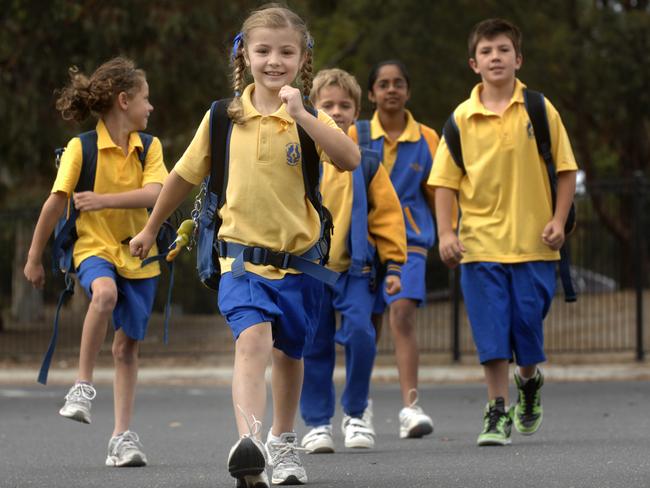What primary school class sizes mean for your child’s results
Class size is often a major factor for parents when choosing the right school for their child – but does it really matter? See how the student-teacher ratio affects your school’s results.
Education
Don't miss out on the headlines from Education. Followed categories will be added to My News.
Smaller class sizes don’t guarantee better academic results, new analysis shows.
The Herald Sun has compiled a list of public primary schools in Victoria and compared student-staff ratio data withaverage NAPLAN scoresfrom last year.
Students are marked in key learning areas: reading, writing, spelling, grammar and numeracy.
Ratios are based on the number of full-time equivalent teachers at the school. This accounts for the number of teachers making up full-time positions, including part-time staff.
Government primary schools have an average of 13.2 students per teacher – although this figure is impacted by micro schools in Victoria that have as little as two students. Their NAPLAN results are not available due to the size of the school.
Bucking the assumption that a lower number of students to a teacher equals better test results, the top performing state primary schools, Serpell Primary and Beverley Hills Primary, had on average 16 students per teacher.
In the top 50 performing state schools, 48 had above the average number of students per teacher, 2021 data from the My Schools website shows.
The state school with the biggest ratio is Virtual School Victoria with 19.6 students per teacher, followed by Saltwater P-9 College, which has 19.4 students per teacher.
Other large state primary schools include Macedon Primary, Point Lonsdale Primary, Camelot Rise Primary in Glen Waverley and Emerald Primary, that all have more than 18 students for every staff member.

Camelot Rise Primary received a high NAPLAN average of 549.6, placing them 26th on the list. Virtual School Victoria also received an average score of 523.8.
Of the 35 schools that scored a NAPLAN average of below 450, 26 had below the average number of students to a staff member.
In Melbourne, this includes Preston North East Primary, Ballam Park Primary in Frankston, Windsor Primary and Glengala Primary in Sunshine West who have between 10 and 13 students per teacher.

Australian Catholic University senior research fellow Dr Jessica Holloway said NAPLAN scores are also impacted by a range of individual and societal influences including socio-economic background, language barriers, mental health challenges and the diverse learning needs of students.
“It is important to remember NAPLAN is only one snapshot of performance,” she said.
“Student learning can only really be understood by looking at the whole picture, including what teachers understand about how their students have progressed.”
Dr Holloway said smaller class sizes should also be considered as beneficial for teachers.
“For years, research has shown that smaller classrooms lead to many positive outcomes, such as stronger relationships and better classroom management.
“These cannot be measured by a test, but they are just as important as any NAPLAN result.”
Education Minister Natalie Hutchins said in the last seven years, student-to-teacher ratios in state primary schools have improved by 33 per cent.
“From reducing face-to-face teaching to more time for planning, preparation and developing – we’re investing to support our hardworking teachers everyday – because they are critical to delivering our kids a world-class education,” she said.
Since 2019 the state government has invested more than $1.4bn in school workforce initiatives, including more than $360m in teacher attraction and retention.



